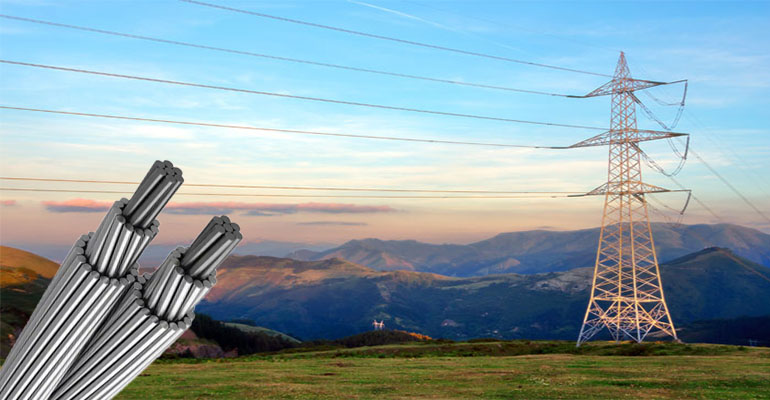- Offices Time:24 Hours Online
- Email:[email protected]
- WhatsApp:+8618339938759

Posted on November 30, 2022
How to choose the bare conductor correctly?
Bare conductors are mainly used in electric power, transportation, telecommunication engineering, motors, transformers, and electrical appliances. According to product structure and use, they are divided into four series: single wire, bare stranded wire, soft wire, profiled wire, and profiles. There are many types of bare conductors. So how should you choose a bare conductor? Let’s discuss it together!
1.Conductor material
(1) Copper: low resistivity, high mechanical strength, stronger corrosion resistance than aluminum, but less reserves and relatively high price.
(2) Aluminum: higher resistivity than copper, lower mechanical strength, and worse corrosion resistance than copper. But the reserves are high and the price is relatively low.
In the selection of conductor materials, aluminum conductors are generally preferred, but copper conductors can be used in places with large operating currents and narrow places and places with severe corrosion of aluminum.
2.Selection of conductor
The cross-sectional shapes of commonly used hard conductors are rectangular, grooved and tubular. The cross-sectional shape of the conductor affects the heat dissipation and mechanical strength of the hard conductor.
(1) Rectangular conductors are widely used in indoor power distribution devices of 35KV and below, and the working current does not exceed 4000A, such as main busbars, connecting conductors and transformers, and lead-out busbars of small-capacity generators. When the current carrying capacity of a single conductor cannot meet the requirements, 2~4 conductors can be used in bundles for each phase.
(2) Slot conductors are suitable for power distribution devices of 35KV and below and working currents of 4000~8000A. For example, the lead-out busbar of a 100W generator.
(3) Tubular conductors are suitable for high-current buses above 8000A, such as generator leads with a capacity of 200MW and above. For indoor and outdoor power distribution devices of 110KV and above, when hard busbars are used, tubular conductors should be used to prevent corona.

3.Common conductors
Commonly used flexible conductors are aluminum-steel conductors, combined conductors, hollow conductors, expanded diameter conductors and split conductors.
(1) ACSR is suitable for outdoor soft busbars of 35KV and above.
(2) Combined wires are used for the outgoing wires of small and medium-capacity generators and transformers.
(3) Hollow conductors, expanded diameter conductors and split conductors have large diameters, which can reduce line reactance, corona loss and interference to communication, and are used for ultra-high voltage busbars and transmission lines. 220KV bookstore lines often use two split conductors.
4.Why choose bare conductor for high voltage lines?
(1) The voltage of the high-voltage transmission line is relatively high. If the conductor is covered with an insulating layer, the thickness of the ordinary insulating layer is far from enough.
(2) If the bare conductor is covered with an insulating layer, in order to make the insulating layer work, the insulating layer needs to be very thick, which will cause the wire to be very thick and heavy, and more iron towers are needed to bear this weight, so It will greatly increase the various costs in the process of line construction.
(3) If the bare conductor is covered with a thick insulating layer, the heat dissipation of the wire will be poor, thereby increasing the consumption of electric energy.
Most of the high-voltage lines are laid across large rivers and hills, and there is a certain distance from the ground and the crowd, so it is relatively safe without an insulating layer. And during the laying process, the staff will also calculate a relatively safe distance.
Post categories
Most Popular Posts
-
The 136th Canton Fair welcomes you to participate!
October 12, 2024 -
High temperature cable introduction
July 26, 2024 -
Kenya Power and Energy Exhibition 2024
June 11, 2024 -
Introduction of rubber sheathed cable
June 5, 2024





